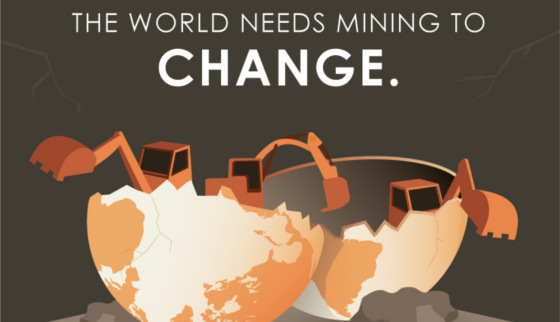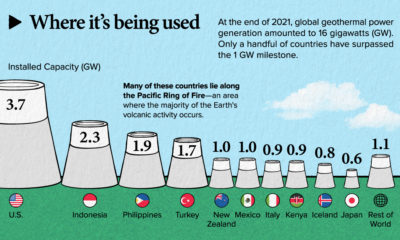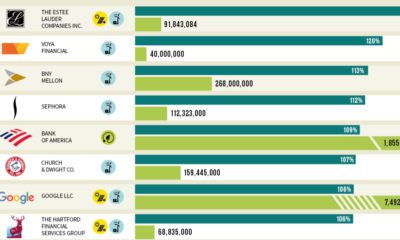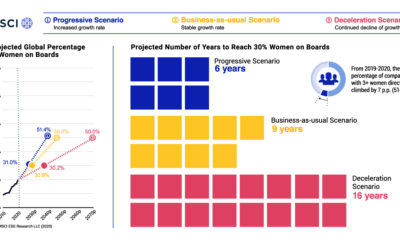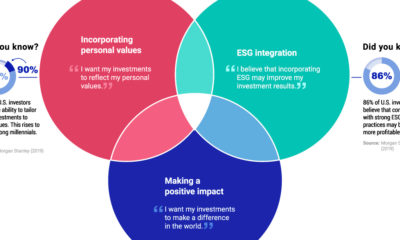Mining
A New Vision for the Mining Company of the Future

A New Vision for the Mining Company of the Future
In 2012, a diverse group of global leaders met at the KIN Catalyst conference in Brazil. With representation from business, academia, nonprofits and government, the group convened and collaborated to discuss the look of the Mining Company of the Future.
Participation in the discussions came from a range of stakeholders. Mark Cutifani (CEO of Anglo American), Ray Offenheiser (President of Oxfam America), and Peter Bryant (Senior Fellow, Kellogg Innovation Network) all co-chaired the discussions. There was also representation from organizations such as Vale, AngloGold Ashanti, The Ford Foundation, Harvard University, Global Indigenous Solutions, and many other organizations.
Together, these different parties identified a set of priorities that could help shift the industry. The consensus was that mining needs to change proactively in order to design their own destiny – or someone or something else will.
Mining companies today face a complexity of problems: spiraling costs, government intervention, deepening pits, lower ore grades, and declining productivity are just some of the issues. Communities are not trusting mining, and this creates additional uncertainty. It is harder to find and start a mine than ever before. Combine this with today’s capital environment and struggling commodity prices, and it creates a very difficult picture.
Since the KIN Catalyst conference in 2012, the working group has developed a much more extensive framework for mining companies, called the Development Partner Framework (DPF). This framework is outlined in the above infographic. If you are looking to get involved, the organization can be contacted at [email protected]
For more information on the KIN Catalyst: Mining Company of the Future at the Kellogg Innovation Network, visit the website: https://www.kinglobal.org/catalyst.php
What do you think? Is this vision possible – and what are the biggest challenges facing the industry?
Lithium
Ranked: The Top 10 EV Battery Manufacturers in 2023
Asia dominates this ranking of the world’s largest EV battery manufacturers in 2023.

The Top 10 EV Battery Manufacturers in 2023
This was originally posted on our Voronoi app. Download the app for free on iOS or Android and discover incredible data-driven charts from a variety of trusted sources.
Despite efforts from the U.S. and EU to secure local domestic supply, all major EV battery manufacturers remain based in Asia.
In this graphic we rank the top 10 EV battery manufacturers by total battery deployment (measured in megawatt-hours) in 2023. The data is from EV Volumes.
Chinese Dominance
Contemporary Amperex Technology Co. Limited (CATL) has swiftly risen in less than a decade to claim the title of the largest global battery group.
The Chinese company now has a 34% share of the market and supplies batteries to a range of made-in-China vehicles, including the Tesla Model Y, SAIC’s MG4/Mulan, and various Li Auto models.
| Company | Country | 2023 Production (megawatt-hour) | Share of Total Production |
|---|---|---|---|
| CATL | 🇨🇳 China | 242,700 | 34% |
| BYD | 🇨🇳 China | 115,917 | 16% |
| LG Energy Solution | 🇰🇷 Korea | 108,487 | 15% |
| Panasonic | 🇯🇵 Japan | 56,560 | 8% |
| SK On | 🇰🇷 Korea | 40,711 | 6% |
| Samsung SDI | 🇰🇷 Korea | 35,703 | 5% |
| CALB | 🇨🇳 China | 23,493 | 3% |
| Farasis Energy | 🇨🇳 China | 16,527 | 2% |
| Envision AESC | 🇨🇳 China | 8,342 | 1% |
| Sunwoda | 🇨🇳 China | 6,979 | 1% |
| Other | - | 56,040 | 8% |
In 2023, BYD surpassed LG Energy Solution to claim second place. This was driven by demand from its own models and growth in third-party deals, including providing batteries for the made-in-Germany Tesla Model Y, Toyota bZ3, Changan UNI-V, Venucia V-Online, as well as several Haval and FAW models.
The top three battery makers (CATL, BYD, LG) collectively account for two-thirds (66%) of total battery deployment.
Once a leader in the EV battery business, Panasonic now holds the fourth position with an 8% market share, down from 9% last year. With its main client, Tesla, now sourcing batteries from multiple suppliers, the Japanese battery maker seems to be losing its competitive edge in the industry.
Overall, the global EV battery market size is projected to grow from $49 billion in 2022 to $98 billion by 2029, according to Fortune Business Insights.
-

 Travel1 week ago
Travel1 week agoAirline Incidents: How Do Boeing and Airbus Compare?
-

 Markets3 weeks ago
Markets3 weeks agoVisualizing America’s Shortage of Affordable Homes
-

 Green2 weeks ago
Green2 weeks agoRanked: Top Countries by Total Forest Loss Since 2001
-

 Money2 weeks ago
Money2 weeks agoWhere Does One U.S. Tax Dollar Go?
-

 Misc2 weeks ago
Misc2 weeks agoAlmost Every EV Stock is Down After Q1 2024
-

 AI2 weeks ago
AI2 weeks agoThe Stock Performance of U.S. Chipmakers So Far in 2024
-

 Markets2 weeks ago
Markets2 weeks agoCharted: Big Four Market Share by S&P 500 Audits
-

 Real Estate2 weeks ago
Real Estate2 weeks agoRanked: The Most Valuable Housing Markets in America

